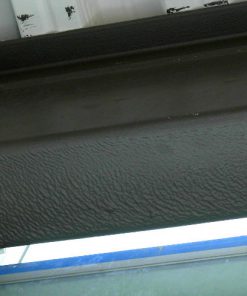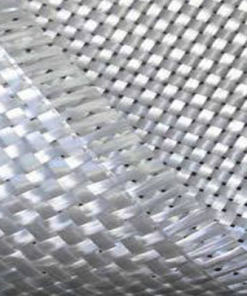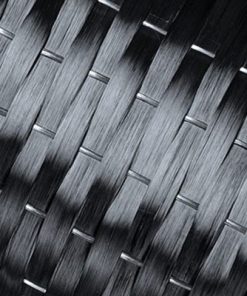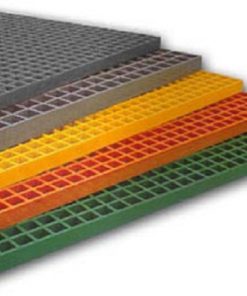Properties
Thermal resistance
R-value is the term given to thermal resistance to heat flow. The higher the R-value of an insulation product, the more effective the insulation properties. 1.8-2 pound polyurethane foam has the highest R-value of readily available insulation used in homes and buildings.
Polyurethane is a closed-cell foam insulation material that initially contains a low-conductivity gas in its cells. As a result of the high thermal resistance of the gas, spray polyurethane insulation typically has an initial R-value around R-5 to R-6 per inch. In comparison, blown fiberglass typically has an R-Value of only R-3 to R-4 per inch.
Foam insulation blocks all three forms of heat transfer:
Conductive heat transfer
The flow of thermal energy through a substance from a higher to a lower temperature region. Foam thermoset plastics reduce conductive heat transfer due in part to having very loose molecular bonds; In addition the cells of the installed spray foam are either filled with air in the case of open cell foam or 245fa in closed cell foam.
Radiant heat transfer
The process by which heat energy in the form of light (usually IR unless the substrate is hot enough to glow in the visible range) is emitted more strongly by warm surfaces and absorbed by other materials especially those of low IR reflectivity (think matte black finish). Radiant heat transfer does not require a medium. Foam insulation materials, such as spray foam insulation, are opaque to thermal radiation, like most solid materials.
Convective heat transferHeat which is created elsewhere that is transported by means of a fluid, such as water or in our case air. Spray foam insulation’s most important attribute is the ability to air seal creating a custom airtight envelope within the building structure. The added benefit to air sealing is the ability to block convective heat transfer from interior to exterior during heating months and vice versa during cooling months, as the heat cannot escape through gaps in the buildings envelope without the aid of air movement from infiltration as a means of transport.
Building applications
Spray foam insulation or spray polyurethane foam (SPF) is an alternative to traditional building insulation such as fiberglass. A two-component mixture composed of isocyanate and polyol resin comes together at the tip of a gun, and forms an expanding foam that is sprayed onto roof tiles, concrete slabs, into wall cavities, or through holes drilled in into a cavity of a finished wall.
“Spray foam” is also an informal term used to refer to various plastic foam materials that are used in building construction to provide thermal insulation and minimize air infiltration. Polyurethane and polyisocyanurate are two types of foam used in this application.
Types
Spray polyurethane foam (SPF) insulation can be categorized into two different types: light-density open-cell spray foam insulation and medium-density closed-cell spray foam insulation. Both types of SPF are thermoset cellular plastics comprising millions of small cells.
Open cell insulation can be crushed in your hand and has a lower insulation value. Closed cell, is rigid to the touch and each air cell is completely sealed. While closed cell foam has a higher R-value it is more costly to buy.
Medium-Density Closed-Cell Spray Foam (ccSPF)
Medium-density closed-cell foam insulation is often referred to as two pound (2 lb) foam. It is a rigid insulating material with an Long Term Thermal Resistance (LTTR) R-value that ranges between 5.1 – 6 per inch When the required minimum thickness of 50 mm is installed, ccSPF is both a vapour barrier and an air barrier.
In Canada, the National Building Code references two standards that apply to the manufacturing and installation of ccSPF: the CAN/ULC S705.1 Material Standard and the CAN/ULC S705.2 National Application Standard. The installation standard requires that all installers of ccSPF in Canada be licensed and carry a photo ID card.
Typically the foam’s natural colour is yellow, however in Canada all ccSPF that have CCMC listings are required to have a unique colour for field identification.
Light-Density Open-Cell Spray Foam (ocSPF)
Light-density open-cell SPF is commonly known as half-pound foam. It is a semi-rigid material with a sponge-like appearance that expands during installation and creates small, open cells that are filled with carbon dioxide. Due to its ability to expand during the application process, it fills cracks, crevices and voids and adheres to irregular surfaces or substrates to form an air sealing insulation.
While the R value will vary, most ocSPF products have an R value of around 3.8 per inch. Unlike medium-density closed-cell SPF, ocSPF is not a vapour barrier. When installed at 5.5 inches or more, ocSPF does act as an air barrier. It is often used for interior walls because it provides sound reduction by blocking and absorbing air leakage. It is usually only recommended for indoor applications.












Be the first to review “Heat and Acoustic Insulation”